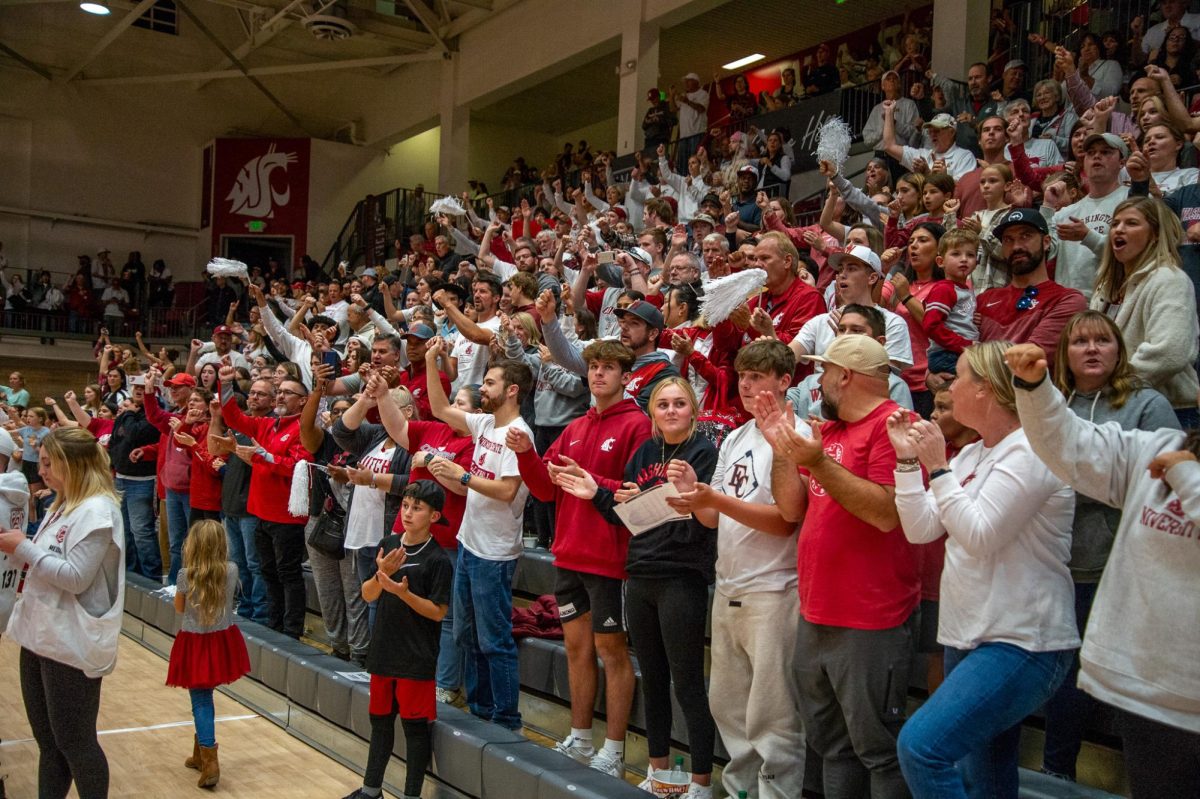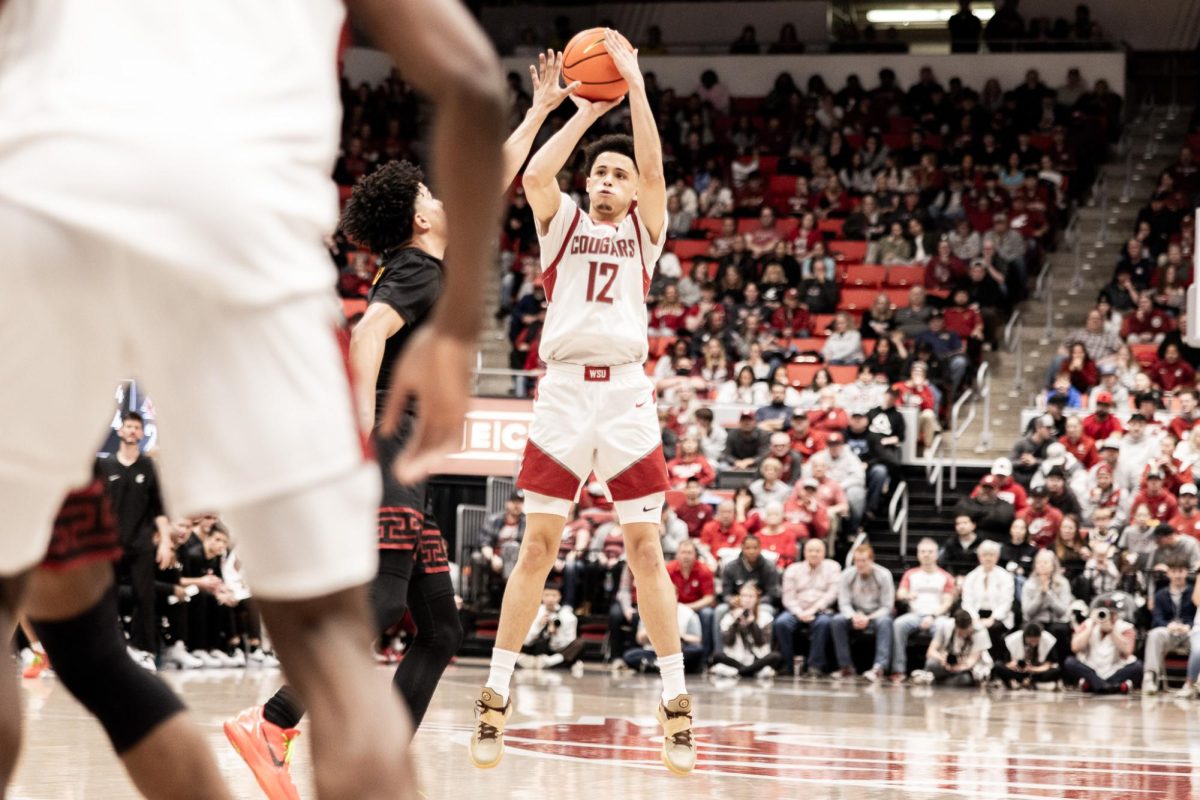The athletics program’s debt to WSU is more than $100 million. That seems bad in its own, but it gets worse.
The athletics program owes at least another $140 million to external funders, bringing the total debt to nearly a quarter-billion dollars.
“For internal debt, we owe WSU $102 million,” said Jon Haarlow, WSU’s assistant vice president for business and financial services, as the interim chief financial officer for athletics. “But we also owe external debt as well.”
The athletics department pays $10 million a year on debt interest, according to the college athletic database.
Von Walden, WSU faculty senator, said the debt may be even higher.
Walden said the athletic department also owes about $220 million in external debt from past facility upgrades and financed debt they have not paid back. Haarlow disputed the claim.
Walden was one of the many faculty members who signed a letter to WSU President Kirk Schulz that addressed concerns about the athletic department’s budget deficit at a time when academic departments faced budget cuts. The letter was signed and supported by 261 faculty members in February.
As revenue fell short, WSU continued to spend.
To understand the millions in debt facing WSU Athletics, go back a decade. That’s when Pac-12 leaders signed a media deal with the Pac-12 Network that fell far short of revenue projections.
Based on those projections, WSU spent millions to upgrade facilities for athletes and fans, even as it was outspent by conference foes. Media rights make up more than half of all revenue for WSU Athletics, according to university documents, and most of that comes from football.
But the Pac-12 Network faltered.
“At that time the league was forecasting significantly higher revenue distributions to its member institutions and because of this, WSU’s athletic department restructured the budget,” Haarlow said.
Haarlow said WSU’s spending continued based on the revenue projected by the Pac-12, but both the conference and athletic department experienced lower-than-projected revenue. This put the athletic department in debt.
Haarlow said they also experienced rising costs of travel, team travel recruiting and medical expenses. These expenses have continued to climb over the last several years.
The pandemic significantly impacted the athletic department revenue due to missed ticket sales and reduced philanthropic support, Haarlow said.
“People’s inability to go out and spend as they historically have took a catastrophic toll on our revenues, particularly in fiscal year 2021,” he said. “And then as we scaled out in fiscal year 2022, the consumer behavior market was not back to pre-pandemic levels.”
The Pac-12 conference was always behind other Power-Five conferences in securing lucrative media rights deals. With a media rights deal set to expire in 2024, the Pac-12 needed to get a new media deal done for the conference to remain intact. But conference members rejected a deal from Apple TV this summer, leading a number of schools to leave for other conferences, according to The Sporting News.
Failing to negotiate a new media deal caused most teams within the Pac-12 to leave for the Big Ten, the Big 12 and the ACC. Only two teams remain in the Pac-12 as a result: WSU and Oregon State University.
Jon Wilner, a San Jose Mercury News reporter who covers the Pac-12, said the initial departures of UCLA and USC – announced last year – played a key role in the Pac-12’s eventual collapse. USC and UCLA were the conference’s biggest revenue producers, he said.
“In the summer of 2022, USC and UCLA accepted an offer from the Big Ten, and that pushed the Pac-12 to the brink of extinction,” Wilner said. “Those are the two schools that have the most media value because Los Angeles is the second biggest media market in the country, so this lowered the value of the Pac-12.”
Wilner said the LA schools will get an average of $65 million a year from the Big Ten and would have only received $45 million if they stayed in the Pac-12. ESPN offered the Pac-12 a $30 million media deal but the Pac-12 declined it, wanting $50 million instead, Wilner said.
“The Pac-12 should’ve taken the deal because it was right in line with what the Big 12 was going to get,” Wilner said. “It was all because the Pac-12 president thought their conference was worth more than it was.”
Now, WSU and OSU are involved in a lawsuit with the Pac-12 and commissioner George Kliavkoff over control of the conference and its substantial remaining assets. UW said that would give WSU and OSU control over “hundreds of millions” of dollars in revenue and liabilities, according to court documents.
While WSU Athletics is in a tough spot, Haarlow said there are already plans in motion to balance the budget for the 2024 fiscal year. WSU created a new position called budget manager that will report to the athletic CFO about budget analysis to ensure the budget is balanced.
Despite the growing budget deficit, WSU Athletics said it remains committed to providing its athletes with the top resources. Recently, the WSU Board of Regents approved a new $27.2 million indoor practice facility called the Taylor Sports Complex that is fully funded by private donors.
The timing of this project has raised concern, but Bill Stevens, WSU senior associate director of athletics and creative communications, said the new indoor practice facility is necessary due to the old facility being significantly outdated. Stevens said the private funding could not be used toward the budget deficit due to the donors restricting it for the sole purpose of the new practice facility.
“WSU Athletics had plans to build a permanent structure for more than a decade,” Stevens said. “We look to modernize the existing facility by providing our student-athletes with a state-of-the-art training area […] The Taylor Sports Complex will assist in recruiting and retaining student-athletes to Washington State University and will benefit all WSU athletic programs.”
Wilner said WSU Athletics is looking at a decrease in revenue that may exceed $30 million a year. The athletic department has to find a way to compensate for that loss, or WSU will likely have to make cuts to their sports teams.













